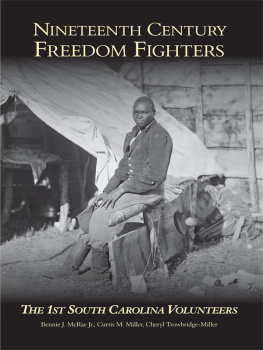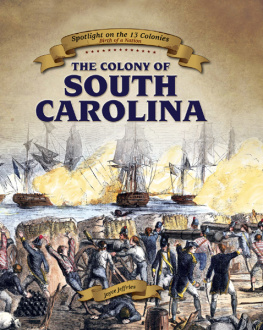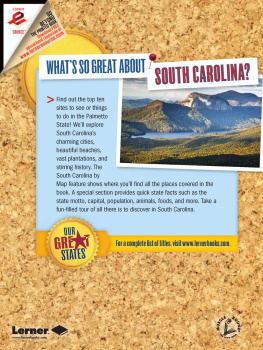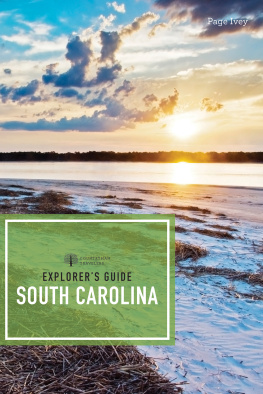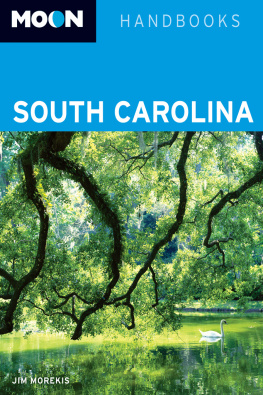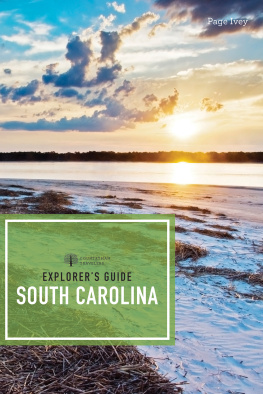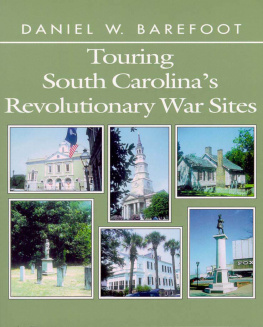SOMBREROS AND MOTORCYCLES IN A NEWER SOUTH
SOMBREROS AND MOTORCYCLES IN A NEWER SOUTH
THE POLITICS OF AESTHETICS IN SOUTH CAROLINAS TOURISM INDUSTRY
P. NICOLE KING

www.upress.state.ms.us
The University Press of Mississippi is a member
of the Association of American University Presses.
Copyright 2012 by University Press of Mississippi
All rights reserved
Manufactured in the United States of America
First printing 2012
Library of Congress Cataloging-in-Publication Data
King, P. Nicole, 1976
Sombreros and motorcycles in a newer South : the politics
of aesthetics in South Carolinas tourism industry / P. Nicole
King.
p. cm.
Includes bibliographical references and index.
ISBN 978-1-61703-251-6 (cloth : alk. paper) ISBN 978-1-61703-252-3 (ebook) 1. TourismSocial aspectsSouth Carolina.
2. TourismPolitical aspectsSouth Carolina. 3. South
CarolinaRace relations. 4. South CarolinaPolitics and government.
5. South CarolinaSocial life and customs. I. Title.
G155.U6K56 2012
306.481909757dc23 2011038837
British Library Cataloging-in-Publication Data available
In memory of my father, Paul Michael King
CONTENTS
Introduction
Touriscapes in a Newer South
Chapter One Smiling Faces, Beautiful Places
The Rise of Modern Tourism in South Carolina
Chapter Two Behind the Neon Sombrero
Alan Schafers South of the Border, 19492001
Chapter Three Camp Weeth Pedro
Politics and Aesthetics Reshape the Borders of Taste at SOB
Chapter Four South Carolinas Black Pearl
Unity and Desegregations Diaspora at Atlantic Beach, 19342009
Chapter Five Neon Motorcycles by the Sea
The Atlantic Beach Bikefest Controversy Refashions the Grand Strand
Conclusion
Preserving the Past, Developing the Future
ACKNOWLEDGMENTS
Writing this book has been a long but enlightening journey. For me, the project has been a part of leaving home and beginning to see place differently. I saw my home state and the idea of being a southerner (something I had rarely ever considered) in a completely new light once I left South Carolina for graduate school out west. But despite this new understanding of place, I felt something was missing. Americans love the drama of the city, the quaint appeal of the rural countryside, and have certainly given enough attention and resources to the suburbsbut, what about those other places, the offbeat places that dont fit neatly into any category? This book was written with all those other places in mind. My career is dedicated to the places we have yet to see fully and to exploring their stories. Whether we drive by them without a second look, or never go through them because they are in a bad part of town, those places matter.
My process of learning to see and analyze the complexities of culture and place has benefitted from the wisdom of many great teachers and scholars. My professors at Coastal Carolina University in Conway, South Carolina, pushed me to inquire about the larger world. Randall Wells, Peter Lecouras, Don Millus, Steve Hamelman, and Jill Sessoms all showed me the ways literature expands our worldview. Diana Robin, Beth Bailey, Ruth Salvaggio, Katja Schroeterand especially the late Gus Blaisdelopened my eyes to the world of critical theory and media analysis. Gus provided me with a lesson important for any newly minted graduate student: not to take myself too seriously and not to become so enamored with theoretical jargon that my writing no longer makes sense. The two years I spent working towards my masters degree at the University of New Mexico gave me a new understanding of both the physical world and the life of the mind.
I thank the Southwest for broadening my horizons and my time at the University of Maryland for grounding me back on the east coast. I came to the University of Maryland to learn about cultural landscape studies and theories of place. My intellectual and professional development was constantly enhanced by the exemplary mentorship of Mary Corbin Sies, and she continues to be an important advisor to me as I negotiate the academic world. As a student in the Department of American Studies, I encountered a rich and rigorous exploration of place that changed my work and my perspective on Americanand southern Americanculture. Nancy Struna has assisted my intellectual development since my first semester at the University of Maryland, and I am better for having known her. Angel David Nieves, Leslie Rowland, and Psyche Williams-Forson, were generous with their time and expertise, helping me to develop and focus my interest in place, aesthetics, and identity while at College Park. Joshua Woodfork has been a valued friend and collaborator since the College Park days. Ed Martini and Donald Snyder were helpful mentors in graduate school and (back in the day) good neighbors. Zack Furness has provided both friendship and different ways of thinking about the politics of mobility. Katherine Broadway read this manuscript numerous times, and her skillful edits and support made it a much better book.
Early in the journey Anthony Stanonis saw some merit or, at least, something interesting in my work on South of the Border. By taking part in the Dixie Emporium symposium and the book that followed, I met many southern studies scholars. I really began to see the dynamic relationship between insiders and outsiders during a late-night adventure when a scholar from California was inveigled to experience Krispy Kreme doughnuts in the South before her presentation on the topic the following day. Through my participation on academic panels with Mary Battle and Andrew Kahrl and conversations with them at conferences, I have gained insight into the bigger picture of tourism, leisure culture, and identity.
My wonderful colleagues in the Department of American Studies at the University of Maryland, Baltimore County (UMBC), have provided an impressive support systemespecially for such a small department. I am especially grateful to Pat McDermott, Jason Loviglio, and Warren Belasco, who read and offered feedback on my manuscript. Pat provided both a fine example as a successful professional and a door that was always open. Jason always offered support, a wonderful sense of humor, and the occasional ride home when I was just too tired to brave the Baltimore bus. Ed Orser has pushed me to see the issues surrounding place and community in the Baltimore area in new and interesting ways. My colleagues Tamara Bhalla and Kimberly Moffitt provided essential support during numerous long meetings over coffee. They helped me through the ups and downs of writing this book and negotiating my new role as an assistant professor at UMBC. Kathy Bryan works tirelessly to make the department function, and Carol Harmon has assisted me with travel arrangements and all the day-to-day aspects of my job, making my time at UMBC more productive and enjoyable. UMBC supported the research for this book with a summer faculty fellowship in 2009, and my department gave me a teaching release in spring 2010 to work on the manuscript. My exceptional students at UMBC have inspired me to see things with new eyes every semester. The road I travel with them year after year is one of the most enlightening and enjoyable transits I know.
The employees at the various archives and libraries I visited in South Carolina always made me feel welcome. I sincerely thank the staff at the South Caroliniana Library at the University of South Carolina (especially Beth Bilderback), the Robert Scott Small Library and the Avery Research Center at the College of Charleston (especially Deborah Wright), the South Carolina Historical Society in Charleston, Coastal Carolina University in Conway, Chapin Memorial Library in Myrtle Beach, and the Dillon County Library. Susanne Pelt, who has been gracious and helpful throughout my years researching South of the Border, has gone far beyond the call of duty. She has been one of the warmest and most welcoming people I have met along the way. South of the Border employees Evelyn Hechtkopf and Shirley Jones took time out of their busy summer work schedules to answer my questions about South of the Borders and Alan Schafers past. Jesse Berger and Nate Mallard made a great film,
Next page

